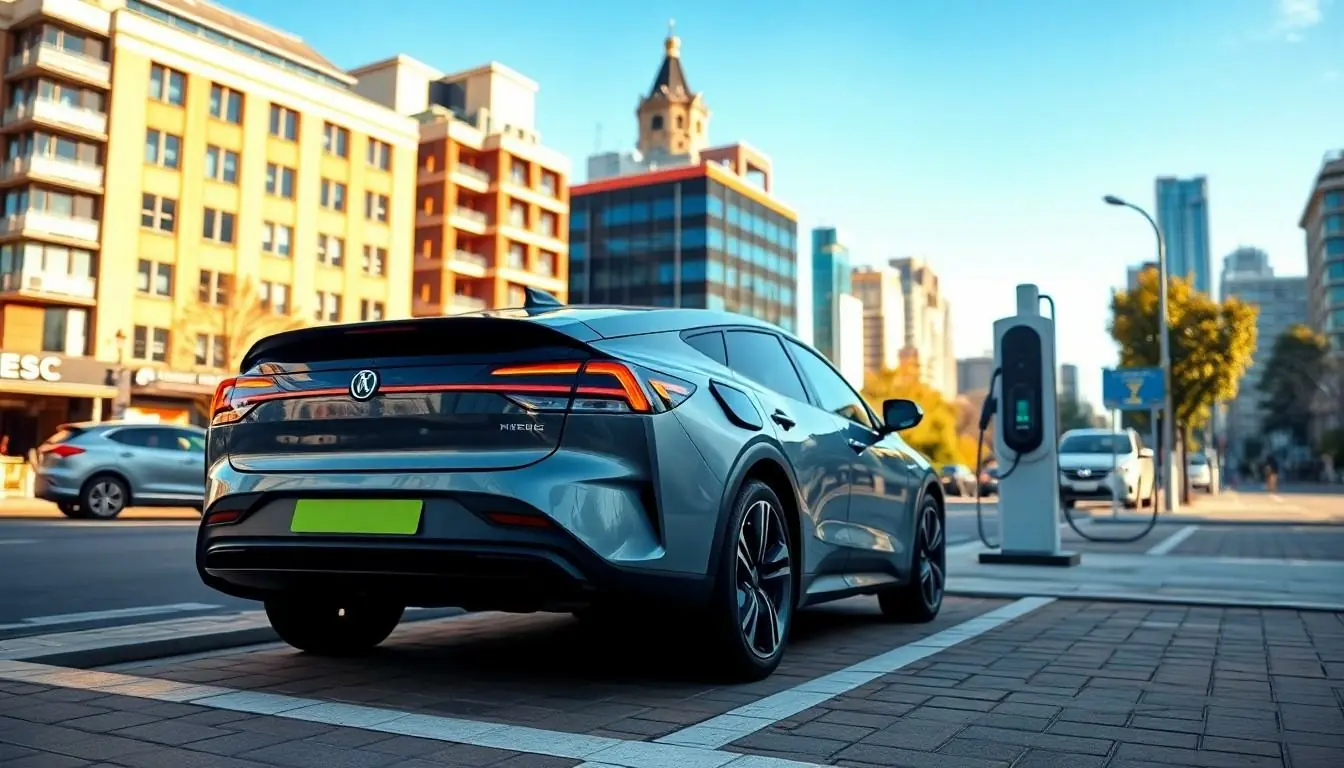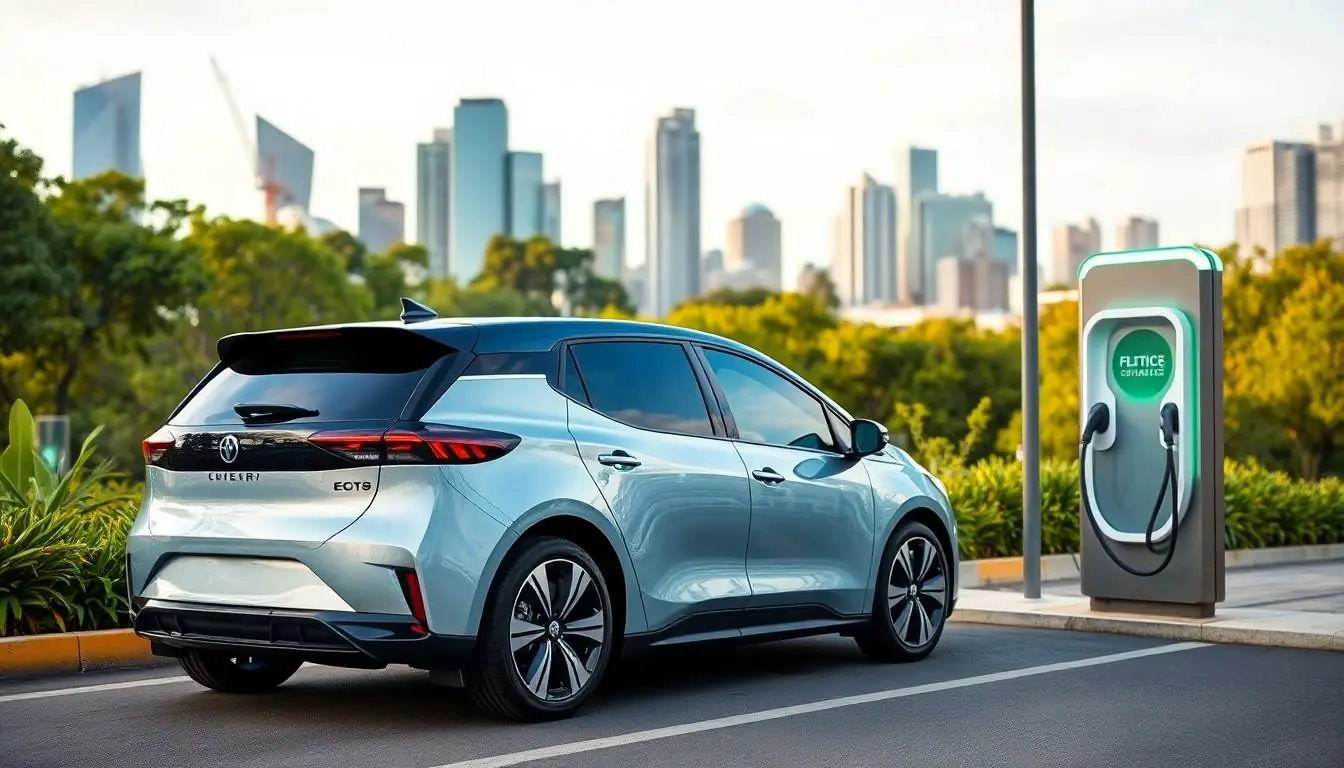Australia’s roads are buzzing with excitement as electric vehicles (EVs) take the stage. With a landscape as vast as the Outback and a penchant for adventure, it’s no wonder Aussies are swapping their gas-guzzlers for greener rides. Picture this: cruising along the Great Ocean Road in a sleek EV, the wind in your hair and zero emissions in the air. Sounds pretty good, right?
But it’s not just about looking cool while saving the planet. The shift to electric vehicles is reshaping Australia’s automotive landscape, making eco-friendly driving more accessible and fun. From government incentives to a growing network of charging stations, the future of driving is electric, and it’s time to plug in. Buckle up as we explore the electrifying journey of EVs in Australia and why now’s the perfect time to join the revolution.
Table of Contents
ToggleOverview Of Electric Vehicles In Australia
Electric vehicles (EVs) are becoming increasingly popular in Australia, driven by a combination of environmental concerns and government incentives. Adoption rates show significant growth, with over 36,000 sales in 2022 alone, marking a 65% increase from the previous year. Many Australians recognize the benefits of reducing greenhouse gas emissions, which aligns with the global push for sustainability.
Charging infrastructure is a critical factor in the EV landscape. Australia now boasts over 3,000 public charging stations, with plans for further expansion. These stations contribute to the convenience of owning an electric vehicle, addressing range anxiety among potential buyers. Cities like Sydney and Melbourne are leading in charging network development, making city driving easier for EV owners.
Government initiatives also play a vital role in promoting EVs. Various state governments offer incentives such as rebates on purchases, reduced registration fees, and access to carpool lanes. New policies aim to increase EV sales to 30% of total vehicle sales by 2030, enhancing the push towards a greener future.
Consumer attitudes are shifting positively towards EVs. Surveys indicate that 57% of Australians express interest in switching from gasoline vehicles to electric models. Automakers are responding to this interest, releasing more affordable and diverse EV options in the market. Australians can now choose from a growing range of electric cars, trucks, and SUVs, catering to different preferences.
Continued improvements in battery technology are further influencing the EV journey. Advances in lithium-ion batteries have increased driving ranges, making EVs more appealing to a broader audience. With continuous innovation, the automotive sector is evolving rapidly, presenting exciting prospects for electric vehicles in Australia.
Current Market Trends

Australia’s electric vehicle market experiences rapid growth, significantly impacting consumer choices and industry offerings.
Growth Statistics
Sales of electric vehicles surged to over 36,000 units in 2022, reflecting a 65% year-over-year increase. This trend showcases a substantial pivot towards sustainable transportation. Government incentives, including rebates and reduced registration fees, directly contribute to this growth. Public charging infrastructure has also expanded, with more than 3,000 stations available nationwide, easing concerns about charging access. Cities like Sydney and Melbourne lead in charging station availability, supporting the growing number of EVs on the road. The statistics suggest a clear shift towards electrification in the Australian automotive sector.
Consumer Preferences
In Australia, consumer interest in electric vehicles rises steadily, with 57% of residents indicating a desire to switch from traditional vehicles. Additionally, preferences are shifting towards a diverse range of electric models, including cars, trucks, and SUVs, reflecting varying consumer needs. Automakers respond to these preferences by introducing more affordable options, making EVs accessible for a broader audience. Battery technology advancements further improve driving ranges and enhance the overall appeal of electric vehicles. These preferences indicate a significant change in the mindset of Australian drivers as they embrace greener alternatives.
Government Policies And Incentives
Government policies and incentives play a crucial role in promoting electric vehicle (EV) adoption in Australia. Various programs support the transition from gas-powered vehicles to electric alternatives.
Subsidies And Tax Breaks
Subsidies and tax breaks significantly lower the initial cost of electric vehicles. The Australian government offers rebates of up to AUD 3,000 for new EV purchases, helping consumers. Additionally, some states provide incentives like reduced registration fees and exemptions from stamp duty. A survey revealed that these financial incentives influence 45% of consumers considering an EV purchase. These measures attract buyers, making EVs financially appealing and facilitating a smoother transition.
Infrastructure Development
Infrastructure development enhances the EV landscape across Australia. Government initiatives focus on expanding charging networks, ensuring convenient access for EV owners. Currently, over 3,000 public charging stations exist nationwide, with plans to install more in urban and regional areas. The federal government aims for a comprehensive charging network covering major highways and urban centers. Increased charging availability addresses range anxiety and instills confidence in potential buyers, aligning with the growing consumer interest in EVs. The advancement in infrastructure complements incentives, encouraging wider adoption of electric vehicles.
Challenges Facing Electric Vehicles In Australia
Despite the growing interest in electric vehicles, several challenges hinder their widespread adoption in Australia. Understanding these obstacles helps address concerns for potential buyers.
Range Anxiety
Range anxiety remains a significant concern for consumers considering electric vehicles. Many individuals worry about the limited distance an EV can travel on a single charge. The average electric vehicle range lasts between 300 to 500 kilometers, which may not suffice for long-distance travel. Studies indicate that nearly 70% of Australians cite range anxiety as a key hesitation. Overcoming this issue requires greater public awareness of the realistic driving ranges of modern EVs, which have improved with advancements in battery technology.
Charging Infrastructure
The availability of charging infrastructure poses another challenge in Australia. While over 3,000 public charging stations exist, they are often concentrated in urban areas like Sydney and Melbourne. Rural areas lack sufficient charging facilities, deterring potential buyers. Upgrades to the charging network must focus on both urban and regional locations to support longer journeys. Moreover, the installation of fast chargers can enhance user convenience and expedite charging times. Enhancing the charging infrastructure can alleviate concerns and encourage more Australians to embrace electric vehicles as viable alternatives.
Future Prospects Of Electric Vehicles In Australia
The future of electric vehicles (EVs) in Australia appears promising, driven by ongoing innovations and increasing awareness of environmental issues.
Technological Advancements
Innovation in battery technology significantly influences the EV market. Enhanced battery capacities now allow for longer driving ranges, attracting more consumers. Solid-state batteries, for example, offer quicker charging times and improved safety features. Automakers are investing heavily in research and development, resulting in cost-effective electric models. Furthermore, advancements in charging technology, including ultra-fast chargers, reduce the time spent recharging EVs. These factors collectively support the growing adoption of electric vehicles across Australia.
Environmental Impact
The environmental benefits of electric vehicles contribute to their rising popularity in Australia. Adoption of EVs leads to reduced greenhouse gas emissions, supporting national climate goals. It is estimated that a shift to electric vehicles could decrease carbon emissions by over 13 million metric tons annually by 2030. Improved air quality will also result from fewer traditional combustion engines on the road. Additionally, using renewable energy sources for electricity further amplifies the positive environmental effects of electric vehicles. This focus on sustainability drives consumer interest and government initiatives.
The shift towards electric vehicles in Australia marks a significant transformation in the automotive landscape. As more Australians embrace eco-friendly options the momentum is undeniable. Government support and expanding infrastructure are crucial in making EVs accessible to a broader audience.
With rising consumer interest and advancements in technology the future looks bright for electric mobility. The potential environmental benefits further enhance the appeal of EVs as a sustainable choice. As this electric revolution continues to unfold it’s clear that Australia is on the path to a greener automotive future.



